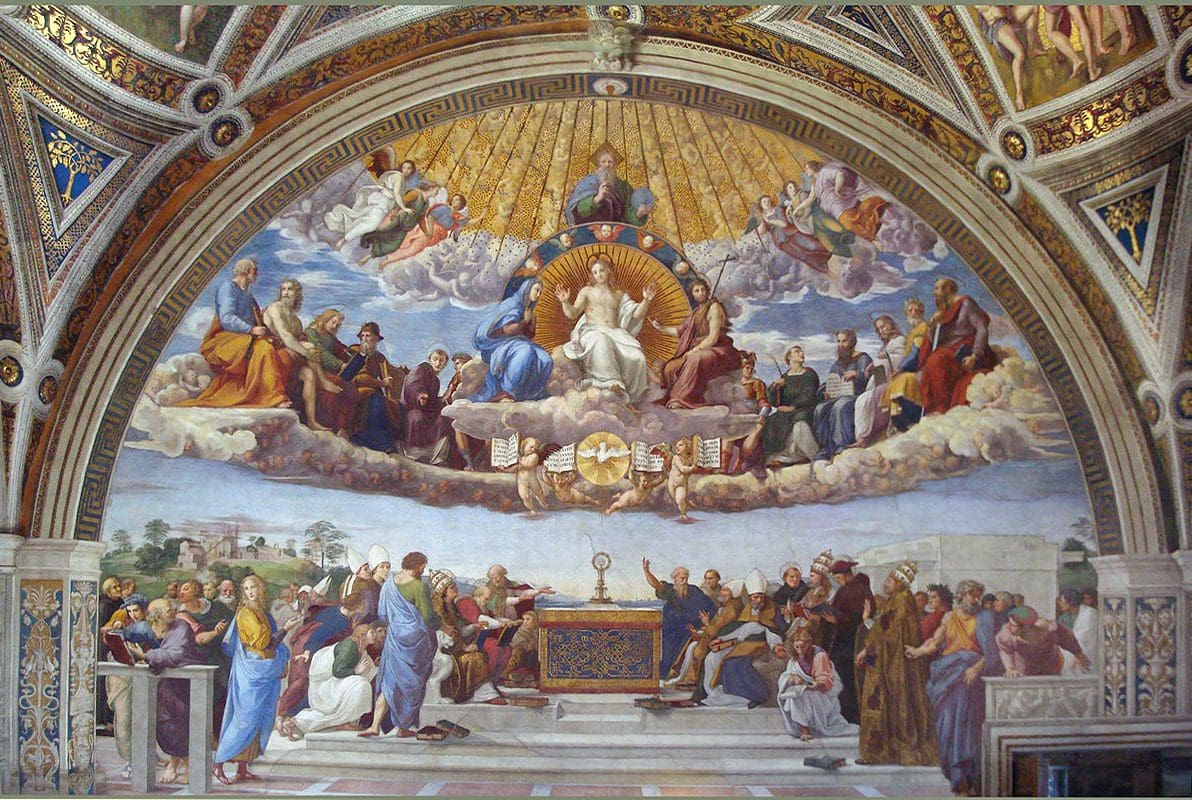Following several Christian Instagram profiles results in getting targeted by several other Christan Instagram profiles’ ads. One of them featured the following prayer, widely known as the Serenity Prayer, and its author:
‘Lord grant me the serenity to accept the things I cannot change,
the courage to change the things I can,
and the wisdom to know the difference’
St. Francis of Assisi
Although I was delighted that I could read this fine prayer again, I was also disturbed for two reasons. First, it seems that there is no evidence that it was St. Francis of Assisi who authored the prayer. On the contrary, trusted records indicate that it was written roughly 800 years after St. Francis. Second, I was familiar with another version of this prayer, one that seemed to be more authentic. In order to ease my frustration, and also to share some interesting and hopefully thought-provoking clarification on the topic, I will briefly review the history of the Serenity Prayer’s origin. Then, I will add two short notes, to highlight the importance of being aware of the authors and the content of our prayers.
Considering the Serenity prayer, it seems quite clear that Reinhold Niebuhr had a crucial role in its formulation
To be clear, even in seemingly obvious situations, doubts are often cast on the authorship of prayers. One justly refers to the claim in Luke’s and Matthew’s Gospel that Jesus has given us the Lord’s Prayer, but there are also challenges to this view.[i] Considering the Serenity prayer, while it is erroneously attributed to several authors[ii], it seems quite clear that Reinhold Niebuhr, one of the influential American protestant pastors, theologians, and public intellectuals in the 20th century, had a crucial role in its formulation. For instance, the 17th edition of Bartlett’s Familiar Quotations[iii] attributes this prayer to Reinhold Niebuhr, written in the following version (the one I was familiar with):
ʻGod, give us grace to accept with serenity the things that cannot be changed, courage to change the things which should be changed, and the wisdom to distinguish the one from the other.’
The Serenity Prayer [1943]
In the past 70 years, most of Niebuhr’s scholars acknowledged the validity of this attribution as well, or at least, did not question it. The beginning of an often-cited book on Niebuhr, written by June Bingham, titled the Courage to Change,[iv]quotes it almost identically to Bartlett’s volume, except for irrelevant differences in word orders and prepositions.[v]What is more interesting is that she argues that Niebuhr wrote it in 1934, when he preached at a small church near his summer home in Heath, Massachusetts. Once, Reverend Howard Chandler Robbins asked for a copy from Niebuhr. It is said that he gave him the original one with the following words: ʻHere, take the prayer, I have no further use for it.’ Then, highlights Bingham, Robbins published it as part of a pamphlet a year later, and it was adopted by Alcoholics Anonymous. In addition, millions of copies were distributed to servicemen during World War Two, and later it was written on Christmas Cards widely.[vi]
Without going into every detail, or listing all the most important steps or the progress of the dispute, it should be mentioned that doubts were raised regarding the authorship, and also about the date of origin of the prayer. One of the figures behind the conflicting views was Elizabeth Sifton, the famous editor and book publisher, and also the daughter of Niebuhr, who – in her book titled The Serenity Prayer: Faith and Politics in Times of Peace and War – attributed the prayer to his father, with a very similar story to that of Bingham, but claiming it was authored nine years later, in 1943.[vii] The other renowned author taking part in the debate was Fred R. Shapiro, a professor at Yale, who pointed to the fact that he found the prayer in eight instances between January 1936 and April 1942, without Niebuhr’s name mentioned, which shows – as Shapiro concluded – that ʻhe appeared to have drawn unconsciously on earlier versions of unknown authorship.’[viii] However, after new research results appeared, and also based on a five-year immense research work on the question – supported by computer-assisted scrutiny of historical databases – Shapiro confirmed that the earliest version he had found in 1932, he believed ʻestablishes to a high degree of confidence that Reinhold Niebuhr did originate the Serenity Prayer.’[ix] Naturally, new materials might emerge which could raise doubts again, but currently, this conclusion formulated in 2014 seems to be the most grounded regarding the authorship and the date.
After new research results appeared, Shapiro confirmed that the earliest version he had found in 1932
The other question besides authorship is the content of the prayer. The differences can be seen easily between “Assisi’s” and Bartlett’s versions (the latter is similar to Sifton’s[x]). The first asks for serenity to accept the things he/she cannot change while the second asks for grace to accept with serenity the things that cannot be changed. The first asks for the courage to change the things he/she can do while the second asks for courage to change the things which should be changed. In short, as Sifton highlights, the simplification – which she attributes to the A.A. – ʻomits the spiritually correct but difficult idea of praying for grace to accept with serenity that which we cannot change.’[xi] Moreover, she argues, the idea to pray for changing things that we can change is nonsense; things we can do does not necessarily mean that we should do it. A more serious mistake is the shift from ʻshould be changed’ to ʻchange the things I can’ since it reduces the scope of imperative and ʻa difficult, strong idea to a banal, weak one.’[xii] It could also be mentioned that – in contrast to what Sifton cites as the A.A. variant – the “Assisi version” uses the singular form instead of the plural one, which also changes the meaning.
Asking for serenity, courage, and wisdom is very different when uttered by a 12th-13th century monk or a 20th century theologian
So after this devastating argumentation on the oversimplification made by the A.A. or those who uploaded the “Assisi version” to Instagram, comes the twist, again by Shapiro, who argues that although Sifton points to a 1943 version which includes the word ʻgrace’, he has been ʻunable to find that language recorded anywhere before 1951. Sifton criticized Alcoholics Anonymous for not including “the spiritually correct but difficult idea” of praying for grace in their version, as well as for other simplifications. AA learned of the Serenity Prayer in 1941, but Sifton’s book called their formulation a “dumbing down of the prayer.” In reality, the AA wording is extremely close to that in the copy Sifton claims to have been given by Niebuhr to Howard Chandler Robbins after the service in Heath, and used by Robbins when he compiled A Book of Prayers and Services.‘[xiii]So what could be the conclusions, with my frustration regarding the authorship of the prayer having been proven right? While Sifton’s version and criticism are appealing, based on Shapiro, should we indeed criticize the quoted, “simplified” versions for their lack originality? The first conclusion is that the question of authorship should be treated with care, since, beyond causing credibility issues on our Instagram profiles, the prayer’s meaning changes depending on who the author is. Asking for serenity, courage, and wisdom is very different when uttered by a 12th-13th century monk or a 20th century theologian. The difference is especially significant when it comes to St. Francis of Assisi and Reinhold Niebuhr. Second, the content, that is the wording of the prayer, matters! Seemingly small changes make crucial differences in meaning, and if someone, for instance, prays a prayer on a daily basis, small things – even unknowingly – lead to differing understandings, perspectives, or even actions. This is why the hard work of investigating and learning about our prayers’ origins can not be avoided.
[i] Dart, John. (1988). Bible Scholars Say Jesus Didn’t Create or Teach Lord’s Prayer, Los Angeles Times, 18 Oct. 1988, https://www.latimes.com/archives/la-xpm-1988-10-18-mn-4561-story.html, accessed 21 Dec. 2021.
[ii] Although without decent citations in most cases, Wikipedia mentions that the ʻprayer has been variously attributed (without evidence) to Thomas Aquinas, Augustine, Boethius, Marcus Aurelius, Francis of Assisi and Thomas More, among others.’ https://en.wikipedia.org/wiki/Serenity_Prayer, accessed 21 Dec. 2021.
[iii] Bartlett, John. (Kaplan, Justin – general ed.) (2002). Bartlett’s Familiar Quotations Boston-New York-London: Little, Brown and Company. 735.
[iv] Bingham, June. (1961). Courage to Change: An introduction to the Life and Thought of Reinhold Niebuhr. New York: Charles Scribner’s Sons.
[v] ʻO God, give us
serenity to accept what cannot be changed, courage to change what should be changed, and wisdom to distinguish the one from the other.’Bingham (1961)
[vi] Bingham (1961)
[vii] Sifton, Elisabeth. (2003). The Serenity Prayer: Faith and Politics in Times of Peace and War New York-London: W. W. Norton & Company
[viii] Shapiro, Fred R. (2014). Who wrote the Serenity Prayer?, The Chronicle. April 28, 2014. https://www.chronicle.com/article/who-wrote-the-serenity-prayer/?bc_nonce=5yh5d9mndxlzyuzgy9em7&cid=reg_wall_signup, accessed 21 Dec. 2021.
[ix] Shapiro (2014)
[x] Sifton (2003) p. 7
[xi] Sifton (2003) p. 292
[xii] Sifton (2003) pp. 292-293.
[xiii] Shapiro (2014)







